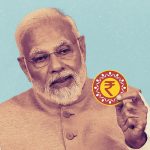Racism in Sport
Beneath a tolerant façade, there are layers of prejudice based on culture and colour
 Sabin Iqbal
Sabin Iqbal
 Sabin Iqbal
Sabin Iqbal
 |
22 Jun, 2020
|
22 Jun, 2020
/wp-content/uploads/2020/06/Racism.jpg)
I said if you’re thinkin’ of being my brother
It don’t matter if you’re black or white
— From Michael Jackson’s Black or White
“I want respect…only respect.” This was the cry of a humiliated young footballer.
Marco Zoro, a defender from Ivory Coast who played for Messina in the Italian league in mid-2000, was in tears as Inter Milan fans directed racial slurs at him. Zoro was racially abused earlier also in Sicily. He refused to take it this time. Zoro picked up the ball, walked off to hand it over to the fourth referee. Inter players intervened, apologising for their foul-mouthed fans, to calm Zoro down.
An injured Makhaya Ntini, South Africa’s first black Test player, hobbled to the crease in the Melbourne Test in 2005. Shane Warne shouted to his teammates to “get this John Blackman out”. Ntini didn’t get the pun, referring to a television personality. He was offended.
American multiple Grand Slam winner Serena Williams was jeered the moment she appeared on court and was booed throughout the Indian Wells tournament in 2001. Venus (Serena’s sister) and her father were walking down the stairs to their seats when one guy shouted from the gallery, ‘I wish it was ’75 (referring to the Los Angeles race riots); we’d skin you alive.’
In a riot of colours, we deal with black and white. And something beyond the colour of the skin.
Brookings Institution, a nonprofit public policy organisation based in Washington, did an extensive research on the race bias in college basketball. Their report says that stereotypes about black intellectual inferiority and white physical inferiority continue to manifest in 21st-century America. Our analysis suggests that sport is not immune from the manifestations of racism and may, in fact, play a vital role in shaping beliefs and interpretations about intellectual ability, physical ability, and performance more broadly. The research says: ‘What quickly became clear is that stereotypes about skin tone and race play a significant role in how announcers describe players during games.’
The study says that the commentators of the college basketball games have a tendency to describe the black players for the physical ability while lighter-skinned players were described for their intellectual capability. ‘Darker-skinned players were more likely to be described for their physical characteristics [e.g., athleticism, speed, strength]. Announcers focused on the size and height of darker-skinned players even though lighter-skinned players were taller and weighed more. Likewise, lighter-skinned players were discussed more for rebounding despite darker-skinned players having more rebounds per game,’ the research says.
If sport were racially biased, Jesse Owens would not have embarrassed Adolf Hitler and his Aryan theory in the 1936 Berlin Olympics; Brian Lara would not have outscored all other batsmen for the all-time highest Test score of a quadruple century; Tiger Woods would not have electrified the golf courses; Serena and Venus would not have stocked their home with Grand Slams; and Usain Bolt and a host of black sprinters would not have ruled the roost in track and field.
But it is sad and such a shame that we have to deal in our everyday life with the subtitles of a racist mindset, let alone the overt manifestations of discrimination. It is not just about the colour of the skin but race, ethnicity and faith that contribute to this hatred.
Racial prejudice or bias has been driven into us, and each passing day, we become more conditioned to think racially and ethnically. We hear the rise of the ‘skin heads’, and memories of Auschwitz and the Apartheid are invoked.
Cancer on Football
But all is not well with the ‘beautiful game’. The increasing incidents of racial abuse in football across Europe are a concern to all. From Spain to the UK, France to the Netherlands, racism in football has taken a dangerous dimension. For years, racism or colourism has raked its ugly head frequently across European football stadiums. The major football leagues in the continent—EPL, La Liga, Serie A, Bundesliga, etcetera—have been plagued by the incidents of racial attacks. The monkey chants and banana throws are just the tip of the proverbial iceberg.
Black footballers in Europe, especially in Spain and Italy, are easy targets of racial abuse. Even some of the best players like Thierry Henry—only a few players can hold a candle to him in football skills—have been subjected to the ugly chants of racist fans.
In November 2004, during a friendly between England and Spain at Bernabéu Stadium in Madrid, several black players in the England side were booed each time they touched the ball. The racial epithets that the Spanish fans shouted made headlines across the UK. Surprisingly, little did it reflect in the Spanish media.
A couple of years later, when Barcelona came to Bernabéu to play archrival Real Madrid, Cameroon international and prolific scorer in Spanish Primera Liga Samuel Eto’o was the target. Every time he kicked the ball, the crowd mimicked monkey noises. Across Spain, black players have repeatedly been abused by the ‘vulgar mobs’.
It is shocking to know that the racial taunts come not just from the crowd but from the very helm of the Spanish team. Luis Aragonés, the then national coach, was fined by the FIFA $3,500 for referring to Thierry Henry as “black shit” in his address to his team. The fine was equal to only a day’s salary the coach earned. FIFA should not make themselves a butt of ridicule with similar acts of ‘benevolence’.
Racism has long been a menace in Italian football as well. When the Udinese were to sign Israeli striker Ronny Rosenthal in 1990, the club’s right-wing fans staged massive protests. In the end, the club had to give in, and Rosenthal went to Liverpool.
Racial discrimination is an evil that blinds us. At times, it defies all logic. Perugia’s dark-skinned midfielder, Fabio Liverani, was a target of racist abuse all over the country, despite being an Italian and having played for the national team. England’s Emile Heskey too bore the brunt of racial abuse when England played in Italy.
During a Roma-Lazio match, the Lazio fans came up with a choreography of blue-and-white placards which spelt the word merda (shit). There were also banners which read, ‘squadra di negri (team of blacks)’. During the match, Roma’s black players Aldair, Cafu and Jonathan Zebina were booed and abused.
During a Getafe-Real Madrid match, Daniel Kome, the Cameroonian-born Getafe midfielder, was subjected to so much racial abuse by the crowd that the El Pais reporter Diego Torres commented: “Eight out of 10 people were monkey chanting. It was more or less the whole stadium. Even the VIP section was monkey chanting. Most of the crowd was middle class, even upper class.”
It’s not only the crowd who wear their emotions and beliefs on their sleeve. Players, too, contribute to stoke the racial flames. Lazio’s Di Canio, who won a FIFA Fair Play award in 2001, was banned for one match after performing a Nazi salute to fans for the second week in succession. The 39-year-old former Italian international was also fined €8,000. It was the third time last year that Di Canio had made the fascist gesture. He was also fined €10,000 for giving a similar Nazi salute. Crowd behaviour may be beyond a club’s control, but the players should show more responsibility in their public conduct.
World Cup Worry
Just before the FIFA World Cup in Germany, it worried many to note that extreme right groups from eastern Europe were planning racial abuses at England’s black footballers. The Sunday Times had revealed in its investigative reports that gangs from Serbia, Croatia and the Czech Republic had held meetings and agreed to bury their traditional rivalries to aim at a ‘common enemy’.
The newspaper had quoted Radi Jiricna, a Czech organiser of the ‘United Fascist Brigade’, saying, ‘“We will be coming together to fight in Germany, our spiritual home. We are looking for black English players because they are taking the places of white players.”’
The paper had also given details of a meeting held in Serbia two months before the World Cup between six Czech skinheads and the Delije, the notoriously violent supporters of Red Star Belgrade. They had also met a group of hooligans from Croatia. Remember, a pitched battle in a football stadium between Red Star fans and a rival Croatian club was one of the sparks that led to another Balkan conflict.
“Germany [the World Cup] will be one big battleground this summer. This is an opportunity for our groups to shout our message and to know people will hear it,” said one of the Serbian organisers, Dragan Banovic. “There will be many more in Germany who will have sympathy with us and we think we will be able to cause many problems for the police. Our targets are the black players and those who follow them. The black players from England will be a good target for us because they will react to what we shout and to the banners we will be carrying. We will be throwing more than bananas at them,” he added.
Roisin Wood, chief of Kick It Out, football’s equality and inclusion organisation, told the BBC recently that the rise in reports of racist abuse in football can be linked to Brexit. She said, quoting the statistics the anti-discrimination charity had gathered, reports of racism had risen by 43 per cent from 192 to 274 last season. “We’re seeing a lot of reports of ‘go back to where you came from’, which we haven’t seen for a while, which seems to be on the back of Brexit,” she told the BBC.
The reports of faith-based discrimination—mostly Islamophobia and anti-Semitism—were a clear leader in the racial discrimination chart—from 36 to 63, a steep jump of 75 per cent. For seven consecutive years, racial discrimination reports have shown an increase, double the figure from five years ago. The 2018-19 season was also marred by incidents of racism, with Raheem Sterling and Pierre-Emerick Aubameyang, among several others, facing abuse.
It’s Not Cricket
Cricket is another sport where we have seen racial discrimination raking its ugly head now and then.
The West Indian cricketers of yore and the coloured players in South Africa during the apartheid were treated as second-class players and were not given the opportunity to represent their national teams. The Caribbean Islands, once ruled by the British, have produced some of the best cricketers to play the game. However good the native players were during the Sahib’s rule, they were looked down upon and were preferred only after the white players.
CLR James, West Indian cultural historian and cricket writer, in his classic Beyond A Boundary has quoted Keith Miller on the issue. Miller writes: ‘…Another problem with West Indies cricket is that the captain has usually been chosen from among the European stock. Just think of the most famous West Indies cricketers…Learie Constantine, George Headley, Frank Worrell, Everton Weeks, Clyde Walcott…all are coloured, but none has led the country.’
James gives more insights into the subject. ‘One evening in British Guiana we were talking about captaincy. Suddenly Clyde, who is always circumspect in his speech, blurted out: “You know who will be the captain in England in 1963? You see that Barbados boy, Bynoe, who went to India? He only has to make fifty in one innings and he will be the captain.” Bynoe is white.’
Former England all-rounder Ian Botham, who is a good friend of his Somerset team-mate Viv Richards, once said the reason he did not want to tour South Africa (during the apartheid era) was that if he did, he could not look Richards in his eye. Colour of the skin, what else, is the matter here? Botham and Richards, two lion-hearted cricketers, have shown us that it is possible to have friendship and respect across culture and colour.
South Africa during the apartheid was a sore thumb in the world of sport. Their racist stand against black and coloured players had snowballed into an international issue and had even threatened to sever their bilateral ties. The infamous Basil d’Oliveira affair was a shameful incident. The South African-born all-rounder, who was given a new lease of playing life in England thanks to the efforts of commentator and writer John Arlott, was included in the England team that toured South Africa in 1968-69. But the then South African Prime Minister BJ Vorster wrote to his English counterpart saying, “it was not an MCC team but an anti-apartheid team.” An international hue and cry followed, resulting in the cancellation of the tour. The incident led to South Africa’s isolation from international sport for two decades.
With the apartheid era now history and the African National Congress in power, things have changed. Though there are rumours of ‘reverse racism’ now, it is heartening to see black and coloured players joining hands with the white players to play for their country.
Interestingly, the coloured South African players touring Australia have complained about more than one incident of racial taunts from the spectators. This should not be allowed. It is a clear take on what is happening across Europe during football matches.
More recently, West Indian players like Chris Gayle has spoken about the racist taunts he and his teammates had to face. T20 World Cup-winning captain Darren Sammy said he was called ‘kalu’ in India, and demanded apology from those who had called him so. When Indian fans made race gestures and monkey chants at Andrew Symonds, things nearly got nasty between the two sides.
The Outcry
Cricket legends like Sir Viv Richards have urged the International Cricket Council (ICC) and FIFA to do more to rid sport of racism. “This matter of black players being subjected to abuse must be urgently addressed by the people who are in charge of the footballing and cricketing bodies,” Richards said in the wake of the South African players’ experience at the hands of the Australian crowd.
Richards, who once ‘grovelled’ the English attack taking offence at a comment from England’s captain Tony Greig, said that there should be zero tolerance to racist remarks from the crowd. He said: “There must be plain-clothed officers placed in the crowd, and when you hear that first remark, an example must be made of the perpetrator and it must be done swift and quick. I believe the governing bodies have been sitting around for too long.”
‘Lily-white sport’
Until the Williams sisters emerged, the only black Grand Slam winners were Althea Gibson, Arthur Ashe and Yannick Noah. Tennis, it is often said, is a predominantly white middle-class sport.
We can argue that things have begun to change of late. But, overwhelmingly, a black champion is a rarity. Martin Jacques, in his article in The Guardian (Tennis is racist—it’s time we did something about it; dated June 27th, 2003), writes on the bitter experiences Williams sisters have gone through. ‘The antipathy of a tennis crowd is hardly a new experience for Williams sisters. In the semi-finals of the US Open last year [2002], the American crowd supported Amelie Mauresmo of France rather than Venus: for the overwhelmingly white, middle-class crowd, the bond of colour clearly counted for more than the bond of nation.”
Jacques categorically argues that the sport is rife with racist innuendos. He goes on to say, ‘Race courses through the veins of tennis, people pretend it doesn’t exist.’ He adds: ‘The Williams sisters, together with their father, are subjected to a steady stream of criticism, denigration, accusation and innuendo: their physique is somehow an unfair advantage [those of Afro descent are built differently], they are arrogant and aloof [they are proud and self-confident], they are not popular with the other players [they come from a very different culture] and, let us not forget, there is plenty of evidence of racism among their colleagues: comments made by Martina Hingis spring to mind, not to mention the behaviour of Lleyton Hewitt towards a black linesman in 2002 US Open.’
Williams sisters, who come from a Los Angeles ghetto riven by drugs and guns, have shown enormous degree of determination, verve and skill to dominate the sport. Though there are disapproving remarks in the tennis fraternity and media about the attitude of Richard Williams, who called tennis “lily-white sport”, and his daughters, there is no dispute to the fact that the sisters had to fight off more than their rivals on the court to come up the ladder.
The American Story
The fabric of America has been woven with the delicate and dangerous threads of racial issues. It’s a country which has grappled with the monster of racial bias and unrest and has integrated itself into ‘zero tolerance’ to any kind of discrimination.
The history of black Americans, especially that of the players, is one of unenviable fight for representation and equality. “More than any other dimension of life, sport had projected black people into the white consciousness.”
Apart from the political leaders like Martin Luther King Jr, who personified the black cause, there were sport heroes like Jackie Robinson, the first black baseball player; Tommie Smith and John Carlos, who gave a black power salute after winning the 200 metres in the 1968 Olympics; and the inimitable Muhammad Ali who threw away his Olympic gold medal into the Ohio river in protest against racial discrimination.
The Civil Rights Acts in 1964 and 1968 and Voting Rights Acts of 1965 eliminated the last bastions of ‘segregation’. In more recent years, black athletes and players have dominated the NBA, NFL and the track and field, and are some of the richest people in the country.
But some still feel if we look beyond the periphery of political correctness, there are subtle themes of racism. To quote a participant in a discussion group: “Racism exists in American sport. It’s just much more covert. Political correctness and integration of the major sport have gone a long way towards cleaning up public behaviour but it has not changed private attitudes. Sit in any stadium and you will hear racist remarks from the fans. Walk in any locker room and you will see black, white and Latino players segregate themselves. Listen under players’ breath and you will hear racial and sexual slurs. The public face has changed, but the private one remains the same. And, it is scarier because it allows us to continue believing we have somehow overcome racism.”
There have been some talks about ‘reverse racism’. Cricketers in Zimbabwe have complained about racial discrimination at the hands of officials representing the Robert Mugabe government. Quota system in South African cricket has also come under flak from those who believe it is not the colour of the skin but talent which should be the criterion for team selection.
Cultural and racial differences are standing out, despite our efforts to paint a rosy picture of a secular, peaceful world strung together by love. Sport is a fine slice of the society; it is a thermometer that shows our racial temperature.
Irrespective of stardom and high profile, black athletes have come across discrimination. Even the best of them have to live with it. American tennis player, the late Arthur Ashe, respected during his day and even now as an icon of courtly, genteel sportsmanship, did not delude himself that fan adoration meant racial acceptance. After he disclosed in 1992 that he had AIDS, a reporter for People magazine asked him: “Mr Ashe, I guess this (AIDS) must be the heaviest burden you have ever had to bear?” Ashe replied: “Not at all. Being black is the greatest burden I’ve had to bear. Even now it continues to feel like an extra weight tied around me.”
Lilian Thuram, World Cup-winner and France’s most capped player, once said: “What struck me when I arrived (in Paris) was that some of my classmates judged me because of my skin colour. They made me believe my skin colour was inferior to theirs and that being white was better,” he said. After he retired, the defender, who scored twice against Croatia to take France to the final, has set up Lilian Thuram Foundation to create awareness against racism.
Sport no longer is the stuff for back pages. It plays an important role in our society. Sport heroes are household names. Our kids adore them. They try to emulate them. Since it holds a major section in our social fabric, we should not pretend that it—be it any sport—is a race-free zone.
It is time we admitted and acted to make ourselves colour and race blind. Let’s make performance our inspiration to cheer or jeer. Football and cricket have caught our attention with their disgusting racist underbelly. There are other sport too where we can, if we listen carefully, hear the whispers of racial abuse. We have a tolerant, secular façade, but beneath the obvious, there are layers of prejudice based on culture and colour.
It is sad that in the colourful world of sport, we see only black or white. It is true what Thuram says: “You are not born a racist, you become one.”

/wp-content/uploads/2025/05/Cover-AfterPahalgam.jpg)










More Columns
he Logic of Grace: On the Election of Pope Leo XIV Open
Rubio asks India, Pak to de-escalate but asks Sharif to stop support to terrorism Rajeev Deshpande
Pakistan Launches Another Wave of Attacks on India Open